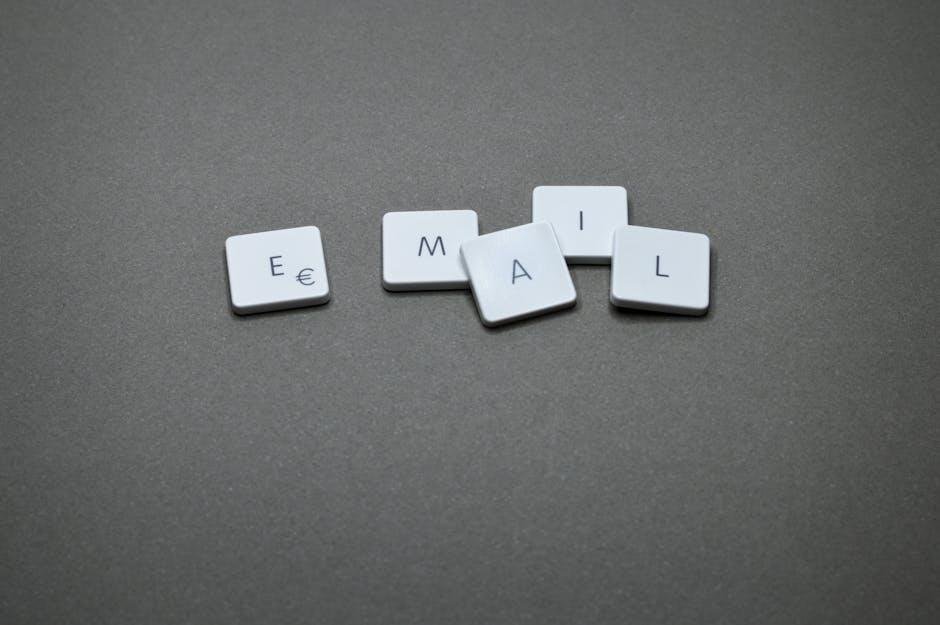In the digital age,where every click and interaction forms the backbone of our online networking,seeing that dreaded “unsubscribe” notification can feel like a jolt to the system. It’s a moment that prompts a flurry of questions: What went wrong? Was it something we said, or perhaps something we didn’t say enough of? While it’s natural to feel disheartened, losing a subscriber doesn’t have to spell doom for your efforts.Instead, it can serve as a valuable opportunity for reflection and growth. In this article, we’ll explore the best practices and insightful strategies to navigate the choppy waters of unsubscribes, guiding you toward forging stronger connections and refining your approach. Whether you’re managing a newsletter,an online community,or a marketing campaign,understanding the art of responding to unsubscribes can turn a potential setback into a stepping stone for success.
Understanding the Reasons Behind Unsubscribes
In the world of digital communication, understanding why subscribers choose to opt-out is crucial for shaping your content strategy. Some common reasons include:
- Overwhelming Frequency: subscribers may feel inundated if they receive too many emails.
- irrelevant Content: If the information provided does not align with their interests, they are likely to disengage.
- Outdated Information: Content that doesn’t appear fresh or engaging can push readers away.
By analyzing unsubscribe rates and feedback, brands can identify patterns and areas for improvement. Consider the following factors that can contribute to subscriber loss:
| Factor | Impact |
|---|---|
| content Quality | High-quality, relevant content keeps readers engaged. |
| Personalization | Customized communications enhance user experience. |
| Subscription Options | Diverse options allow users to manage preferences effectively. |

Embracing Feedback: Learning from Subscriber Insights
When subscribers choose to opt out, it’s crucial to view it as an opportunity for growth rather than a setback. Each unsubscription is a valuable insight into what might not be resonating with your audience. By carefully analyzing feedback, you can unlock the reasons behind these decisions. Consider sending not just a standard exit survey, but one that encourages open-ended responses, allowing subscribers to express their thoughts freely. You might find that they’re looking for:
- Content Relevance: Topics that align more closely with their interests.
- Frequency of Communication: An overwhelming number of emails.
- Change in Needs: Shifts in personal circumstances or preferences.
Compile this feedback systematically and look for common themes. Using a simple table format can help organize these insights effectively:
| Feedback Category | Subscriber Comments |
|---|---|
| Content Relevance | “I need more guides on advanced topics.” |
| Frequency | “I feel overwhelmed by the number of emails.” |
| Personal Changes | “I’m moving on to a new job and no longer need updates.” |
Onc you’ve gathered this information, take actionable steps to align your offerings with what your audience desires.Let feedback serve as a roadmap, guiding you towards refining your content strategy—ultimately enhancing retention and attracting new subscribers.

Improving Engagement: Strategies to Retain Your Audience
One of the most effective ways to bolster audience retention is by actively seeking feedback. By understanding why subscribers choose to leave, you can tailor your content to better resonate with your audience’s needs.This can be achieved through:
- Post-Unsubscribe Surveys: A fast survey can provide valuable insights into what prompted their decision.
- user Experience Enhancements: Make navigation easier across your platforms, ensuring that users can find what they’re looking for without hassle.
- Value Addition: Regularly evaluate your content to ensure it remains relevant and engaging, possibly introducing new topics or formats based on subscriber feedback.
Engaging content can transform a one-time reader into a loyal follower.Consider implementing various strategies that encourage consistent interaction:
- Authentic Storytelling: Share personal experiences or case studies that resonate emotionally with your audience.
- Interactive Elements: Incorporate polls, quizzes, or infographics that prompt users to participate actively rather than passively consume content.
- Regular Check-Ins: send periodic emails or messages to engage with your subscribers, inviting them to give their thoughts on recent content or upcoming topics.
Turning Unsubscribes into Opportunities for Growth
Every unsubscribe can be viewed as a missed opportunity or a springboard for growth. Instead of taking it personally, think of it as a valuable chance to learn about your audience’s preferences and pain points. To turn this feedback into constructive insight,consider reaching out to your unsubscribers with a exit survey. This can help you gather information on why they left and what changes could make your content more appealing. Here are some key questions you can include in your survey:
- What prompted your decision to unsubscribe?
- Did you feel the content was relevant to your needs?
- Is there anything we could change that might entice you to stay?
In addition to collecting feedback, analyze the data to identify trends among unsubscribers. Consider segmenting the reasons into categories and compiling them into a table for clarity:
| Reason for Unsubscribe | Percentage of Unsubscribers |
|---|---|
| Content Irrelevance | 40% |
| Too Many Emails | 30% |
| Quality of Content | 20% |
| Personal Reasons | 10% |
by evaluating this data, you can create targeted strategies to enhance your content and communication, ensuring a stronger connection with your audience moving forward. Embracing the idea that every unsubscribe is a potential lesson can guide your growth and foster a more engaged subscriber base.
The Conclusion
In the ebb and flow of digital communication, unsubscribes are an inevitable part of the journey. while it might feel disheartening in the moment, viewing this as an opportunity rather than a setback can profoundly impact your approach. By understanding the reasons behind unsubscribes, nurturing existing relationships, and refining your content, you can foster a more engaged audience. Remember, every subscriber has their own story, and every unsubscription is a chance to reassess, adapt, and grow. Forge ahead with confidence, and let every exit fuel your evolution as a communicator. In the world of connection, what matters most is the quality of engagement, not just the quantity. As you turn the page on unsubscribes, look forward to creating a more resonant narrative with those who choose to stay.Your story is far from over—it’s just beginning.

